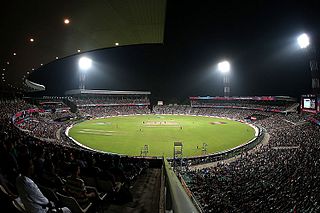| Personal information | |||||||||||||||||||||||||||
|---|---|---|---|---|---|---|---|---|---|---|---|---|---|---|---|---|---|---|---|---|---|---|---|---|---|---|---|
| Full name | Joseph Cupitt | ||||||||||||||||||||||||||
| Born | 25 September 1867 Barrow Hill, Derbyshire, England | ||||||||||||||||||||||||||
| Died | 6 May 1932 (aged 64) South Kirkby, Yorkshire, England | ||||||||||||||||||||||||||
| Bowling | Left arm medium pace bowler | ||||||||||||||||||||||||||
| Domestic team information | |||||||||||||||||||||||||||
| Years | Team | ||||||||||||||||||||||||||
| 1905 | Derbyshire | ||||||||||||||||||||||||||
| First-class debut | 22 May 1905 Derbyshire v Essex | ||||||||||||||||||||||||||
| Last First-class | 19 June 1905 Derbyshire v Northamptonshire | ||||||||||||||||||||||||||
| Career statistics | |||||||||||||||||||||||||||
| |||||||||||||||||||||||||||
Joseph Cupitt (25 September 1867 — 6 May 1932) was an English cricketer who played first-class cricket for Derbyshire in 1905.

Cricket is a bat-and-ball game played between two teams of eleven players on a field at the centre of which is a 20-metre (22-yard) pitch with a wicket at each end, each comprising two bails balanced on three stumps. The batting side scores runs by striking the ball bowled at the wicket with the bat, while the bowling and fielding side tries to prevent this and dismiss each player. Means of dismissal include being bowled, when the ball hits the stumps and dislodges the bails, and by the fielding side catching the ball after it is hit by the bat, but before it hits the ground. When ten players have been dismissed, the innings ends and the teams swap roles. The game is adjudicated by two umpires, aided by a third umpire and match referee in international matches. They communicate with two off-field scorers who record the match's statistical information.

Derbyshire County Cricket Club is one of eighteen first-class county clubs within the domestic cricket structure of England and Wales. It represents the historic county of Derbyshire. Its limited overs team is called the Derbyshire Falcons in reference to the famous peregrine falcon which nests on the Derby Cathedral. Founded in 1870, the club held first-class status from its first match in 1871 until 1887. Because of poor performances and lack of fixtures in some seasons, Derbyshire then lost its status for seven seasons until it was invited into the County Championship in 1895. Derbyshire is also classified as a List A team since the beginning of limited overs cricket in 1963; and classified as a senior Twenty20 team since 2003. In recent years the club has enjoyed record attendances with over 24,000 people watching their home Twenty20 fixtures in 2017 – a record for a single campaign. The local derby versus Yorkshire at Chesterfield now regularly sells out in advance.
Cupitt was born in Barrow Hill, Derbyshire, the son of Thomas Cupitt, a coal miner, and his wife Susannah. Cupitt himself became a miner. [1] He played for Derbyshire in the 1892 season and in the 1893 season when the club was outside the championship. Twelve years later in the 1905 season he made his first-class debut, against Essex in May. He took one wicket in the match, that of future Test cricketer Claude Buckenham, though Derbyshire lost the match by an innings margin, in part thanks to a first-class best 277 runs from Charlie McGahey. His second and final first-class appearance came the following month, against Northamptonshire, against whom, he took two wickets but scored just a single run in two innings.

Barrow Hill is a village in Derbyshire north-east of the town of Chesterfield. The population of the village is included in the civil parish of Staveley. It was formerly the site of Barrow Hill railway station, and is also the site of Barrow Hill Engine Shed. It also has its own primary school, Barrow Hill Primary School and a new park which it won over New Whittington with more votes.
Derbyshire County Cricket Club in 1892 was the cricket season when the English club Derbyshire had been playing for twenty one years. Derbyshire's matches were not considered to be first class in this season. The club had lost first class status after 1887 and did not regain it until 1894, the year before they joined the County Championship. However many of the players competed for the club earlier or subsequently at first-class level.
Derbyshire County Cricket Club in 1893 was the cricket season when the English club Derbyshire had been playing for twenty two years. Derbyshire's matches were not considered to be first class in this season. The club had lost first class status after 1887 and did not regain it until the following year 1894. However many of the players competed for the club earlier or subsequently at first-class level.
Cupitt was a left-arm medium-pace bowler and took three first-class wickets at an average of 48.33 and a best performance of 2 for 24. He batted in four innings in two first-class matches at an average of 9.5 and a top score of 13. [2]
Cupitt died in South Kirkby, Yorkshire at the age of 64.

South Kirkby is a town in the City of Wakefield in West Yorkshire, England which is governed locally by South Kirkby and Moorthorpe Town Council. The town forms half of the civil parish of South Kirkby and Moorthorpe. The parish has a population of 10,979.

